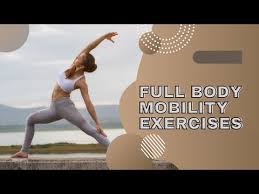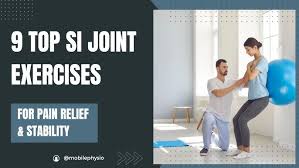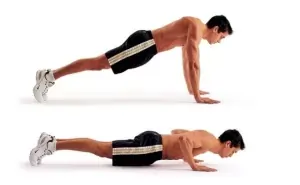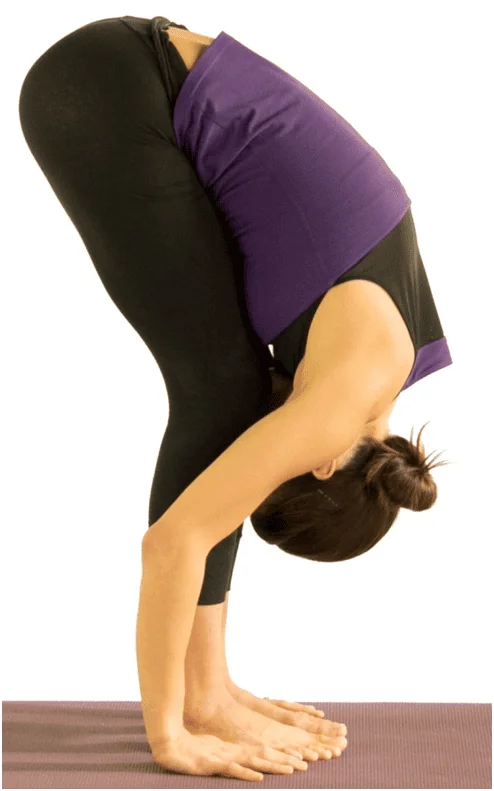10 Health Benefits Of Walking
Table of Contents
Why is it beneficial to walk?
Walking is an aerobic exercise that works the lower body’s big skeletal muscles. It has few negative consequences and many positive advantages. Walking more quickly than usual, regularly, and over a long enough distance might possibly help you keep up your physical fitness.
You may have the best of both worlds when you walk. It provides all of the physical advantages of exercise plus additional mental benefits.
In actuality, frequent walking can help reduce the symptoms of long-term mental health issues including despair and anxiety.
Without any particular membership or equipment, you can walk wherever. Your experience of beneficial impacts will increase with increased practice.
Health Benefits of walking are:
Consumes calories
By calorie-burning, you may either keep your body mass index or drop it.
A few factors will affect how many calories you burn, including:
- walking speed
- distance covered
- mountainous terrain (walking uphill burns more calories than walking on a level surface)
- your weight
Using a calorie calculator, you may find out how many calories you burn. You may also use this chart as a general approximation.
Enhance the heart
By jogging for at least thirty minutes five days a week, you can lower your risk of coronary heart disease by almost 19%. Furthermore, your risk may decrease even more if you walk more or for longer periods of time each day.
May assist in lowering blood sugar
Taking a little walk for a certain time after eating may help lower your blood sugar.
At least three times a day, following breakfast, lunch, and dinner, walking for fifteen minutes improved blood sugar levels more than a 45-minute walk at another time of day, according to small research.
To confirm these findings, additional research is necessary. Consider including a stroll after your dinner into your regular routine. It might also help you plan out your fitness regimen for the day.
Reduces arthritic pain
Walking can assist in protecting your lower extremities and hips, among other joints. This is because it strengthens and lubricates the muscles which stabilize the joints.
Walking may also have additional benefits for those with arthritis, such as reducing joint discomfort. Additionally, a weekly stroll of five to six kilometers may help avoid arthritis.
Boost immune system
Regular walking can boost your immune system and lower the risk of catching a cold or the flu. According to a study, 1,000 adults who walked moderately for 30-45 minutes a day had 43% fewer sick days and fewer upper respiratory tract infections than those who didn’t.
Additionally, their symptoms were milder when they did fall ill, compared to the sedentary adults in the study. To experience these benefits, try taking a daily walk. If the weather is cold, you can walk on a treadmill or in an indoor mall.
Boosts your energy
It may be useful to know that taking a stroll rather than grabbing a cup of coffee will help you feel more energized when you’re feeling tired or low on energy. Walking has been demonstrated to boost blood circulation and cognitive performance by increasing the amount of oxygen flowing through your body. Furthermore, walking can increase energy levels and lessen sensations of exhaustion by stimulating the synthesis of hormones including cortisol, adrenaline, and norepinephrine.
Stress causes the hormone cortisol to be produced, which can raise blood sugar levels and give you a fast energy boost. The “fight or flight” hormones, on the other hand, include adrenaline and norepinephrine, which are produced in response to physical or psychological stress. These hormones have the ability to raise blood pressure, heart rate, and breathing rate, all of which can contribute to an increase in energy and alertness.
Thus, the next time you’re feeling low on energy or lethargic, think about going for a quick stroll to help you feel better overall and give you more energy.
Increase your vitality
A quick and easy technique to help with mental health issues is to go for a walk. Research has indicated that it can assist in lessening depressive, anxious, and negative emotions. It has also been demonstrated to improve self-esteem and lessen social withdrawal.
It is advised that you strive for at least 30 minutes of brisk walking or another moderate-intensity physical activity at least three times a week in order to get these advantages. If you have trouble fitting in a 30-minute walk at once, you may divide it up into three shorter walks of ten minutes each over the day.
Have a longer life
Walking more quickly might increase your lifespan. The chance of dying overall was shown to be 20% lower while walking at an average speed as opposed to a sluggish one.
On the other hand, walking quickly—at least 4 miles per hour—lowered the risk by 24%. The study examined the relationship between walking faster and variables such as total causes of death, heart disease, and cancer-related deaths.
Work on your lower body
Walking may cause the muscles in your legs to become stronger. To build strength, take a walk in a hilly area or on an incline treadmill. or search for routes with steps.
Additionally, switch up your walking routine with cross-training activities like cycling or running. Try resistance exercises like leg curls, squats, as well as lunges to further build and tone the muscles of your legs.
Original thought
You may be able to think more creatively and with clarity after a walk.
In research including four tests, participants were asked to compare their attempts to generate new ideas while sitting and walking.
Participants performed better when walking, especially when going outside, according to the researchers.
The researchers came to the conclusion that walking promotes free thought and is an easy method to both boost creativity and gain exercise.
The next time a work-related issue stumps you, try calling a walking meeting with your coworkers.
Some advice for walking safely
To ensure your safety as you walk around, keep these tips in mind:
- Walk-in sections are reserved for those on foot. Find well-lit areas if at all possible.
- When taking a walk in the late hours or early morning, make sure you wear a reflective vest or light so that cars are able to see you.
- Put on shoes that can accommodate your arch and heel.
- Put on relaxed, loose attire.
- To keep hydrated, make sure you have a lot of water before and after your stroll.
- Apply sunscreen to avoid becoming sunburned, even on overcast days.
Walking improves blood flow and circulation to the body and brain, which in turn elevates mood. Your central nerve system, the hypothalamic-pituitary-adrenal (HPA) axis, is positively impacted by it. This is helpful as the HPA axis regulates your stress reactivity. Walking is a great way to exercise since it helps to relax your nervous system and reduce tension.
By bringing companions along, you may increase the health benefits of walking. One or two days a week spent walking with others can offer a lot of advantages. Engaging in physical activity together with constructive social contact can help elevate low emotions, prevent depression, and boost self-esteem. Strive to walk for ten to thirty minutes three days a week.
Is walking something I ought to consider doing?
Walking is the most natural exercise; it can be done at any time of year, costs nothing, and may be a part of our daily routine at home and at work. We all share this common persistent aerobic activity unless you are really weak or have a major impairment.
Do I require any specific walking apparatus?
All you need is appropriate attire and footwear that is suited for the terrain you will be covering, such as comfy shoes or boots. Because one-third of senior citizens fall at least once a year, it’s important to maintain stability and support balance and posture. What you put on your legs can help with this.
Trekking poles can also be helpful; those with obesity, Parkinson’s disease, or lower back or joint problems may find these very helpful. The poles also lessen the tension on your lower body, particularly around the knee and ankle, which is helpful if you’re walking with a big backpack. Walking with poles engages the upper body, which makes the body work harder but causes less physical strain.
How should I begin practicing walking?
Because people tend to self-regulate in terms of intensity, length, and frequency, walking is a terrific low-impact exercise that is also connected with a relatively low incidence of injuries. Walking is a terrific way to get moving whether you’ve been sedentary, inactive, or elderly. Start slowly and work your way up to walking at a steady speed for brief bursts of time, and aim for 30 minutes or more of brisk walking each day.
A walking group is a fantastic opportunity to meet new people, walk in different places, and maintain motivation.
- When walking, are there any safety concerns to take into account?
- Walking has drawbacks, just like other activities. These include air quality, road safety, and personal safety, depending on where you walk. To ensure a fun and safe walk, consider this advice:
- Communicate your intended path to someone.
- Pick a route away from major highways wherever feasible; • Carry a cell phone with you; • Dress visibly, especially at night; • Walk on a designated sidewalk or pavement; if you must cross a road, do so on the right side facing oncoming traffic.
Make a regimen for yourself
As soon as you begin your walking regimen, keep in mind:
Obtain the appropriate equipment. To help cushion your arches and absorb shock, look for shoes with thick, flexible soles, a strong heel, and adequate arch support.
Put on loose-fitting, comfy clothing as well as weather-appropriate gear, such as layers in colder climates. Wearing clothing that wicks away sweat will help you stay more comfortable. For increased visibility when walking outside after dark, consider using reflective tape or bright clothing. When going outside during the day, don sunglasses, a hat, and sunscreen.
A pedometer, app, or activity tracker is what some individuals decide to utilize. These can be useful for monitoring your heart rate, calories, time, and distance.
Make a thoughtful choice about your path. If you want to stroll outside, stay away from routes with uneven grass, low-hanging branches, potholes, and damaged sidewalks.
If walking isn’t recommended due to the weather, think about going for a stroll in a mall that has designated walking hours.
- Get warmed up: For five to ten minutes, take gentle, leisurely walks to warm up your muscles and get your body ready for activity.
- Cool down: To aid in the cooling down of your muscles, walk slowly for five to ten minutes after your walk.
- Extend: Stretch your muscles gently once you’ve cooled down. If stretching is more your style, don’t forget to warm up before you walk.
Set decent objectives
- The Department of Health and Human Services suggests the following exercise regimens for the majority of healthy adults: aerobic exercise. Obtain 150 minutes or more of moderate aerobic exercise. 75 minutes a week of intense aerobic exercise, or a mix of moderate and intense exercise.
- According to the rules, you should carry out this activity over the course of a week. Increased physical activity will have even more positive effects on health. However, even modest levels of exercise are beneficial. Engaging in little bursts of physical activity throughout the day can accumulate to yield several health advantages.
- Strengthening exercises. At least twice a week, perform strength training routines for all major muscle groups. For each exercise, try to complete one set with a weight or resistance level that will cause your muscles to fatigue after 12 to 15 repetitions.
- Generally speaking, try to get in at least 30 minutes of exercise each day. If you’re not able to dedicate that much time, consider doing brief bursts of action during the day. It is better to be active in whatever degree than not at all. Engaging in even moderate levels of physical exercise is beneficial, and the cumulative effect of daily action yields several health advantages.
Recall that it’s acceptable to begin gently, particularly if you haven’t been working out frequently. You may begin by setting aside five minutes every day for the first week, and then gradually increase it by five minutes every week until you are spending at least thirty minutes.
Aim for at least 60 minutes of physical exercise most days of the week for even greater health advantages.
Monitor your progress
Recording your walking distance, pace, and number of steps taken will provide you with a sense of where you’ve come from and help you stay motivated. Imagine how wonderful it will make you feel to see how many kilometers you have walked in a week, month, or year.
To find steps and distance, try utilizing a pedometer, app, or activity tracker. Alternatively, write these figures in a walking journal.
Remain inspired
A walking program requires initiative to get started. It needs dedication to stick with it. To maintain motivation:
Orient yourself towards achievement. Have a basic objective to start, like “I’ll take a 5- or 10-minute walk during my lunch break.” Once you’ve established a 5- or 10-minute walk as a habit, make a new plan, such as “I’ll walk for 20 minutes after work.”
Establish designated walking periods. You could soon be aiming for objectives that previously seemed unachievable.
- Make the walk relaxing. Request the company of a friend or neighbor if you dislike going for walks alone. If you get your energy from groups, sign up for a walking or fitness club group. You could enjoy taking walks while listening to music.
- Change up your routine. For variation, consider creating multiple routes if you stroll outside. If you often stroll in your neighborhood, think about going to a different place to walk, such as a state or city park. As your walking becomes more comfortable, try walking on routes that have hills or steps. Alternately, walk more quickly for a few minutes, then more slowly for a few minutes, and so on. Tell someone which path you’re traveling if you’re walking alone. Walk in areas that are well-lit and safe.
- Accept the days you’ve missed. Don’t give up if you start missing your regular walks. Remind yourself of the positive feelings that come from including exercise in your daily schedule, and then resume your habit.
- You’re headed towards a significant goal if you take that initial step: improved health.
When is the best period in the day to go for a walk?
The ideal time of day is whatever suits you best, but if you do decide to go for a walk first thing in the morning, this will also help you establish a daily body clock, which will probably lead to better sleep. Walking from 8 to 11 am, according to recent research, may help lower your risk of heart disease and stroke even more, particularly if you’re a woman.
Overview
One of the simplest and most affordable methods to exercise is to walk; it may improve your mood and help you lose weight. Strolling is a commonly disregarded workout option, but when done properly—that is, over a long enough distance and at a reasonable pace—it may help increase cardiovascular fitness, and endurance, and possibly even lengthen your life.
Before starting any new fitness regimen, please see a doctor if you are inexperienced with exercise, have an underlying medical condition, or have any injuries.
FAQs
The Top Advantages of Walking
1) Declines stress: It’s the ideal method to decompress and get rid of everyday tension.
2) Retains an appropriate weight
3) Find new location
4) Reduces blood pressure
5) Improves sleep
6) Delivers more energy
You may live a healthy life by doing something as easy as going for a regular brisk walk. As a prime example, common, brisk walking can benefit you in:
Retain a healthy weight while cutting fat. Prevent or treat a number of illnesses, such as high blood pressure, cancer, heart disease, stroke, and type 2 diabetes.
Walking strengthens the muscles in your arms if you lift them while you walk, as well as your leg and abdominal muscles as well.
How many general health steps should one take? Walking is a low-impact, moderate-intensity activity with minimal dangers and many health advantages. The CDC advises most individuals to strive for 10,000 steps a day as a result. This equates to around 8 km or 5 miles for most individuals.
Walking Every Day Can Help With Breathing
Lastly, walking on a daily basis can help with respiratory and cardiovascular health. Better breathing allows your skin’s cells to replenish with oxygen, which in turn improves the texture, tone, and general condition of your skin.
References
- 10 benefits of walking. BBC Good Food. https://www.bbcgoodfood.com/howto/guide/10-benefits-of-walking
- Walking: Trim your waistline, and improve your health. Mayo Clinic. https://www.mayoclinic.org/healthy-lifestyle/fitness/in-depth/walking/art-20046261
- What Are the Benefits of Walking? Healthline. https://www.healthline.com/health/benefits-of-walking






